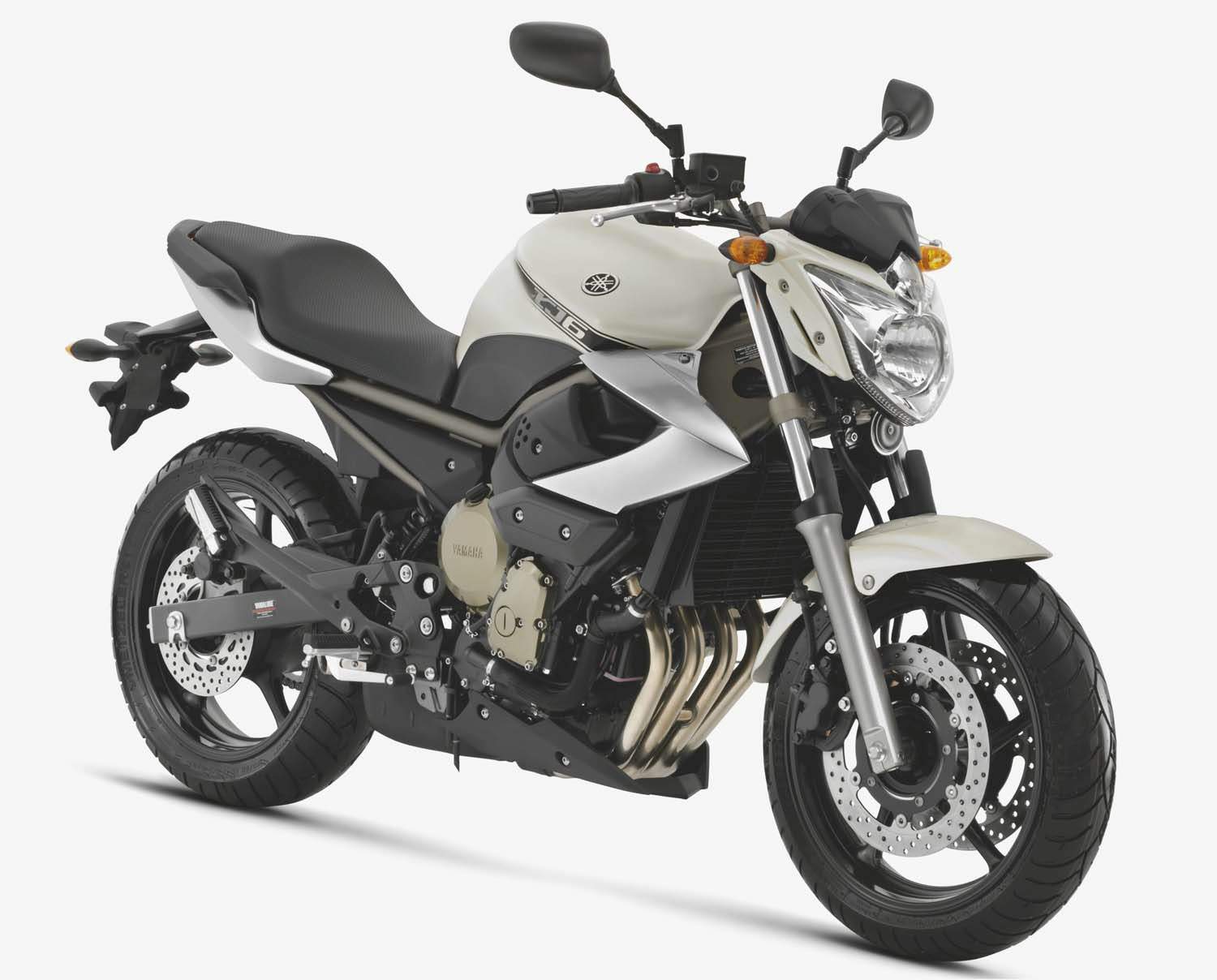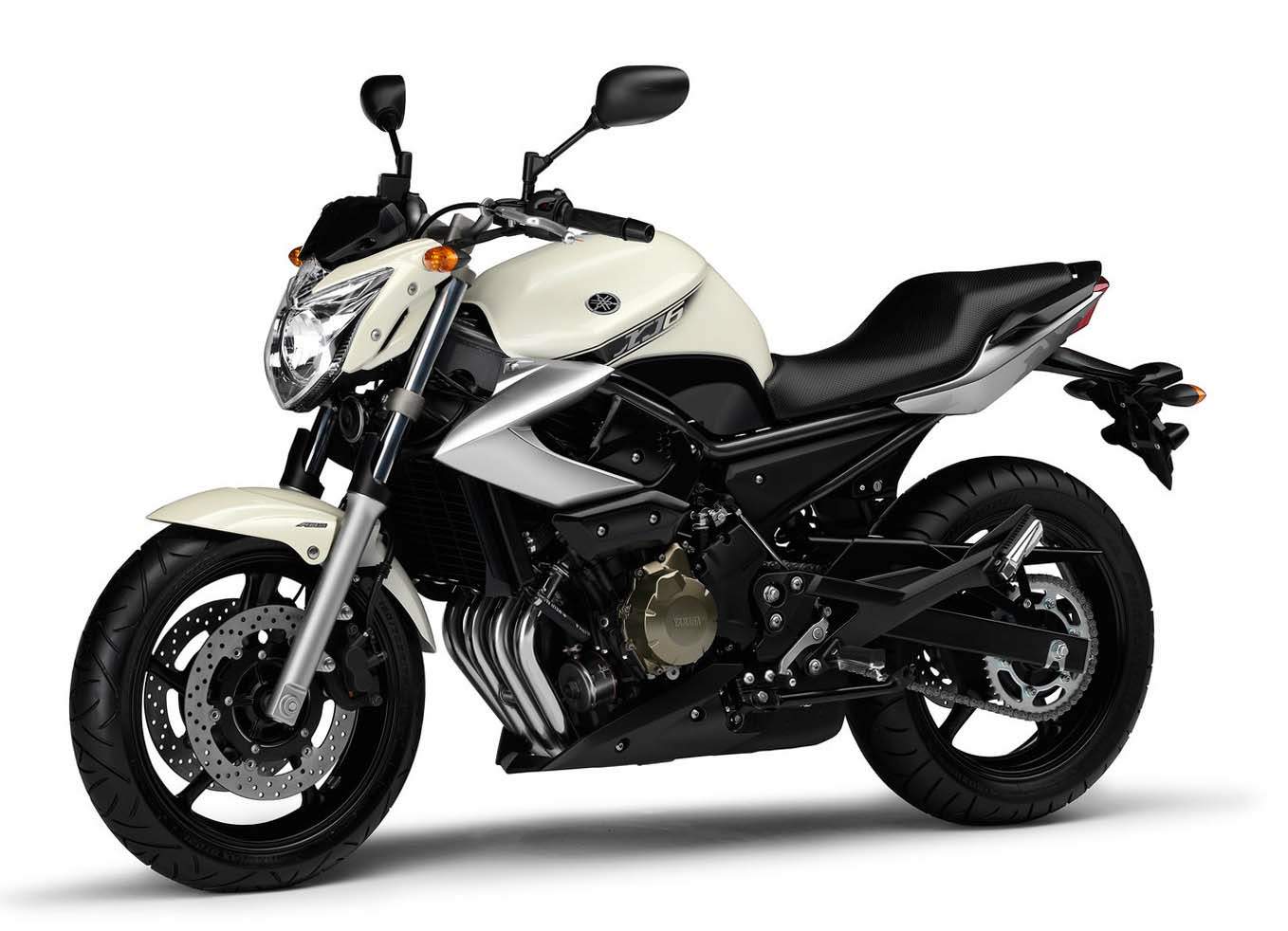
|
|
|
|
|
|
Classic Bikes
Custom Bikes
Individual
Racing Bikes AJP
AJS
Aprilia
Ariel
Avinton / Wakan
Bajaj
Benelli
Beta
Bimota
BMW
Brough Superior
BRP Cam-Am
BSA
Buell / EBR
Bultaco
Cagiva
Campagna
CCM
CF Moto
Combat Motors
Derbi
Deus
Ducati
Excelsior
GASGAS
Ghezzi Brian
Gilera
GIMA
Harley Davidson
Hero
Highland
Honda
Horex
Husaberg
Husqvarna
Hyosung
Indian
Jawa
Kawasaki
KTM
KYMCO
Laverda
Lazareth
Magni
Maico
Mash
Matchless
Mondial
Moto Guzzi
Moto Morini
MV Agusta
MZ / MuZ
NCR
Norton
NSU
Paton
Peugeot
Piaggio
Revival Cycles
Roland Sands
Royal Enfield
Sachs
Sherco
Sunbeam
Suzuki
SWM
SYM
Triumph
TVS
Ural
Velocette
Vespa
Victory
Vincent
VOR
Voxan
Vyrus
Walt Siegl
Walz
Wrenchmonkees
Wunderlich
XTR / Radical
Yamaha
Zero
Video
Technical
Complete Manufacturer List
|
Yamaha XJ6
 THE COOL NEW MIDDLEWEIGHT A contemporary and dynamic all-rounder For 2009 the Yamaha middleweight line-up is further strengthened with the arrival of the dynamic and agile new XJ6, a naked version of the 2009 XJ6 Diversion. This all-new 600 is one of the coolest and desirable models in the important naked 600 category, and is powered by an inline 4-cylinder engine that has been tuned to deliver responsive low to mid-range torque for fun riding. With its strong flow of easy-to-handle power, this cool new 600 is a genuine all rounder, designed to make the rider feel at home in town, on twisty back roads, and on the highway. The lightweight, slim and compact new chassis features a low seat height, making the XJ6 an ideal machine for both new and experienced riders of all ages who want a stylish middleweight that can handle just about any situation. While offering high levels of practicality, the contemporary design of the new chassis and bodywork on the new XJ6 underlines its position as one of the capable and attractive machines in the category. Its newly-developed FZ6-based engine, combined with the compact, rider-friendly chassis design and agile handling feel ensure that this new naked 600 offers a truly special ride quality. Combined with its high levels of riding enjoyment and outstanding overall performance, the new XJ6 looks set to establish itself as a real favourite with a wide range of new owners in 2009 and beyond. Technically the XJ6 shares the same bases as the XJ6 Diversion, while its body work gives the XJ6 a cool, light and agile roadster look.
XJ6 Model Overview • Easy-handling, dynamic and stylish new middleweight• Rider-friendly linear power characteristics• Slim and lightweight handling feel• Ideal balance of controllability and performance• Newly-developed FZ6-based 600cc engine• Plenty of low to mid-range torque• Compact and attractive chassis• Contemporary bodywork design give cool, light and agile roadster look• Outstanding levels of fun, enjoyment and performance• Also available with ABS
Engine Technical Highlights • 600cc liquid-cooled inline 4-cylinder 4-valve DOHC• Newly-developed high-compression cylinder head• Slimmer inlet ports• Cam profile designed for strong and linear low to mid-range torque• One-piece cylinder and upper crankcase for good rigidity• Bore x stroke 65.5 mm x 44.5 mm• Lightweight forged aluminium pistons• Four-hole two-direction fuel injection system• 4-2-1 exhaust with midship muffler located beneath chassis• 3-way catalyzer and exhaust O2 sensor• New inner-push type clutch for easy action• Redesigned shift mechanism for smooth and easy gearchanging
Chassis Technical Highlights • Newly-designed high-tensile steel diamond-type frame• Idealised balance of lateral rigidity for strong cornering performance• 1,440mm wheelbase• Easy-handling caster angle of 26 degrees and 103.5mm trail• Hexagonal slimline fuel tank with comfortable knee-grip area• New slimline swingarm with inner bracket design• 41mm diameter conventional front forks• Monocross rear suspension• 17.3 litre fuel tank capacity• Low 785 mm seat height• Lightweight 298 mm front discs and 245 mm rear disc, thickness 4.5mm• 120/70-ZR17 front tyre and 160/60-ZR17 rear tyre• Lightweight, low-drag 520 chain (FZ6 is 530)• Newly-designed lightweight cast wheels• Timeless new styling emphasises concentration of mass• Linear-control ABS available as an option• New multi-function instrumentation• Adjustable handlebar positionColours both XJ6 and XJ6 ABS Cloudy White Extreme Yellow Midnight Black Accessories Yamaha will offer a range of accessories created specifically for the XJ6, and the line-up will be available from authorized Yamaha Dealers. The accessory range will include: Aluminium rear carrier Centre standEngine guard City tank bagRoller protectors Tank pad46-litre top case Inner bag for top case Back rest for top case
Motociclismo impression For those who don’t want an R1 or
even an R6, Yamaha have the do-it-all XJ6. It won’t knock your socks off in
terms of styling or performance, but it’s easy to ride, low on maintenance and
even provides a reasonable amount of fun as long as you remember it’s an XJ6 and
not the YZR-M1. The guys at Motociclismo recently tested the bike, and here are
some excerpts from what they have to say about the new XJ6: Source Faster and Faster & Motociclismo  Review The Diversion is like the VMax, a
Ghost from the ’80s brought back to life by Yamaha in 2009. After years of the
FZ6 acting as Yamaha’s entry-level model into multi-cylinder motorcycles, the
XJ6 is back. Its aims to be easier to ride slow, with less power but more torque
in lower revs, and above all - to be even more affordable.
For me, the XJ6 only appeals in the scenario where I couldn’t afford riding
anything else. The level of finish and design adds value to what essentially is
a budget entry-level motorcycle. I wouldn’t have to even test the XJ6 to see
that it offers great value for money. But if I were looking, I would have been
happy that I tested first because the XJ6 isn’t all that comfy for the touring
part.
Riding back into Sydney, we were treated to a great photo location in front of
the Sydney Harbour Bridge, popularly called the Coat Hanger. Wheelies allowed,
it would have been rude not to! Besides, first gear easily allows for some air
underneath that front tire. The XJ6 is a great city bike or commuter, and I’d
say that this is budget with style. Source
Motorcycle.com
|
|
|
Any corrections or more information on these motorcycles will be kindly appreciated. |